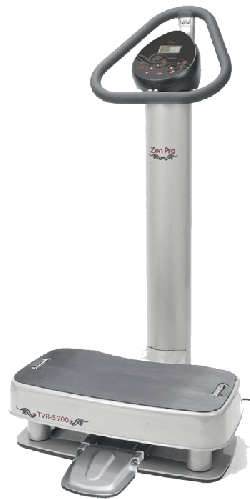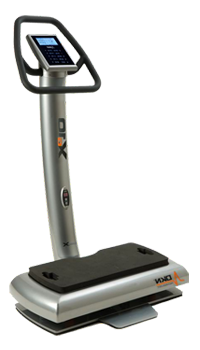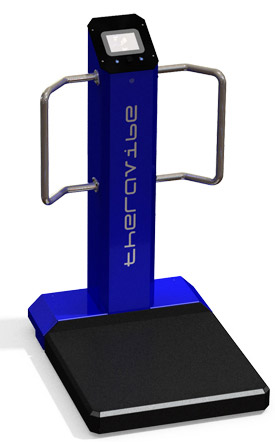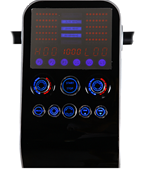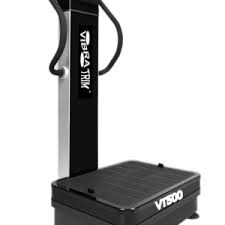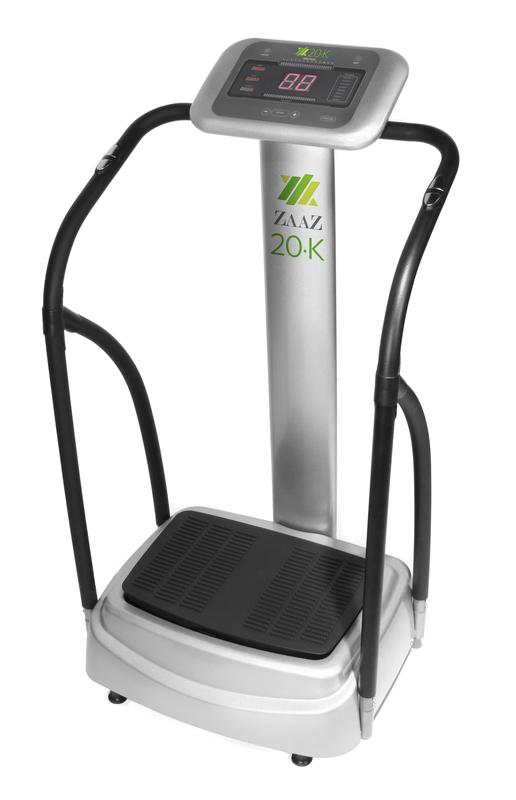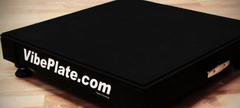How to pick by price
$999 and under
These simply feel like foot massagers that you can buy at Brook Stone but the difference is you can stand on them and they are a little more powerful than the ones you set your feet while relaxing on the sofa. Although, more websites selling cheap ones like this have more testimonials that I would ever have time to read, in the years of talking to people that have had these, not one of them has ever told me a successful story. These cheaply made, low powered machines are what give the industry a bad rap. These are the ones that most people buy and after they don't get results after it is too long to return it, this is when I usually get called. If you just want a foot massage, then you might like one of these cheapies. I know people that sell them and they would be happy to get your business, but not me!
999 to 1299 range
Models in this range should have at least a 3/4 HP ac motor or a 1 hp dc motor, and some a 1.5 HP motor but usually around 200 watts. The motors in this range usually produce very little 8 G forces which still depends on the weight. If the peak G force is 2 G's and someone is 250 pounds, you can assume they will never get the full 2 Gs as someone would if they were lighter. Remember, there has to be a peak of 2 G force (peak) in order to give a heavy person 2 G forces. I do not like how the companies measure G force with motor speed with no plate on it. Because they don't have a chart showing how many G forces to expect giving different weights, I had to do it myself. I can't believe the people who are actually selling these machines don't know this stuff. I had to tell them.
Although most of the models in this range can hold up to 250 to 300 pounds, these still aren't powerful enough to produce the results that the higher wattage/amp models can do. The models in this range are good for light to medium users. Although they can work, they still don't have the solidness of feel that the heavier machines offer and smoothness. If you are over 180 pounds and you can tolerate a slightly louder noise as these mid range motors have to work harder to support heavier weights, this might be a good buy. The heavier you are with a lower powered motor the more the machine starts to vibrate itself. Expect a plate size no more than 21 inches in this range. If you see one larger in this price range, especially with a motor less than 1.5 horses, just question it. Most of the models I found in this range start out at 10 hz. This is not slow enough to allow the one way valves a chance to fully open and close to create the hydraulic pump to stimulate lymph flow. I have seen a few sold in this range that go down lower than 10 but they lack so much of the necessary G force to stimulate lymphatic flow that they are pretty much a waste of time if using them for that reason.
1299 to 1699
This seems to be the price point that most people pay for residential vibration machines. The choices get tricky in this range as there are more models in this range than any other. After comparing horsepower and input wattage and seeing how the plate reacts with different weight classes, you can easily see how some brands are cheap knockoffs that are inflated to make you think its a 1600 dollar machine and others really have the components that make it really worth that much. Of course they all can deliver about high G forces but the question is, when does it stop delivering the G forces at which weights and how far do you have to keep your feet apart to get it. Taller people have no problem standing near the edges naturally. Taller people instantly can pick out a machine that is not powerful enough for them just by standing near the edge and letting it strain. For people under 200 pounds this range is suitable. The models in this range usually have one motor. You should be able to find at least a 1.5 HP direct current motor in this price range that has at least 500 watts. You might have to sacrifice some of the bells and whistles though. The plates might only go up to 21 inches which allows people to stand near the edges of a 1.5 HP powered plate. I would be cautious if I saw a plate size bigger than this supported by 1.5 HP. If it is 500 watts, it will probably have no problems supporting 300 pounds as the machines claim. It is funny how many people look for the biggest plate and look to see which one has the most G forces and have no idea what 300 watts versus 500 watts means. Most of the models in this range still start out at 10 hz with a few starting at 6 hz but at 6 hz they usually have no more than 2 G forces at that low vibration. These models can hold heavy weights but do not have enough G force after hip cancellation to build bone density like models do that give in the 3 G force range. Remember, it is not "how high" the machine can produce G forces. The question to ask yourself is how "high" are the G forces on the lowest setting. Almost any machine can produce 8 G forces or even 25 G forces on the highest level. The cost of producing a machine that delivers the most g force on the lowest level is what makes them expensive to make. Once the plate starts moving quickly, you really don't need a powerful motor as its running on momentum with very little energy. Usually, you won't find a 2HP machine in this range that can get you near 3 G forces at the lowest setting. In this range you will also start seeing some of the spiral type oscillating platform that have an extra motor that moves the plate usually about 1 to 3 inches in a front to back vibration. This is popular among those with lymphatic issues as it gives an extra boost to loosen the one way vessels in the lymphatic system as they open and close. It also helps develop stabilizer muscles. The new spiral type vibration systems definitely are preferred over only oscillating movement. I have seen the additional spiral motors start out at 200 watts AC and all the way up to 300 watts DC.
1699 to 1999
The models in this range tops the upper end of the residential range. The models that cost over 1699 should be at over 70% steel. These models should be able to hold its maximum weight limit, usually over 300 pounds, without straining even with users on the edge of the plate. Most machines in this range are 1.5 horsepower and usually direct current motors. After Googling direct current motors versus AC motors, it shows that DC motors cost about 2 to 3 times more than AC motors. There is definitely a difference in feel between standing on 2HP DC motor versus a 2 HP AC motor of the same watts and amps. For one thing, DC motors by design are smoother and much quieter. Although DC motors use slightly more electricity, you don't sacrifice the EMF that the AC motors make. If you don't care, then an AC motor is fine, as long as you put EMF blocking stickers around the plate, but can get costly as you might want to replace them every 6 months.
The models in this range can handle plate sizes 25 inches or more. The best models in this range can go 5 or less vibrations per second while still giving close to 3 G forces near the edges. Standing near the middle of a 2 HP, 500 watt DC powered plate, for example, should give at least 2 g forces standing shoulder with apart. When the motor has to power the plate at 5 hertz or less, it is working mostly on power and not momentum. At 5 hertz or less at high amplitude near the edge vibrations, very little ballistic impact is created due to the slowed down plate and can give enough time for the body to flush out the wastes. This is the opposite of what a body massager does, which just vibrates without enough G force and amplitude for deceleration in each vibration. With at least 2HP and 500 watts, you can expect to stand at least on an edge of a plate over 25 inches long. Every inch over 25 inches takes extra power exponentially.
How to spot an inflated priced in the 1699 to 1999 range. It really disgusts me that companies are charging people 1999 that really should charge 1200 or even lower. Just to make it clear, I am going to lay down the specs of what an inflated price looks like:
1) 1.5 HP AC (not even a direct current motor
2) 25 inch or larger plates (not cool to have a large plate when they know the motor can't power heavy people standing at the 25 inches length and they show videos of lightweight people on it.
3. Claiming solid steel when they know it is a very low gauge (thickness) which weighs almost the same as plastic needed to secure the frame.
4. Low Hertz - Claiming it can go under 10 Hz per second when they refuse to tell you there is hardly any G force.
5) Claiming it is quiet when they know that as it ages it gets louder (The higher the amperage the less the machine has to work to move the plate, especially with heavier weights. Note that a company can say they have a 2 Hp motor but fails to publish how many amps it has but only stating the watts. Most people that call me don't know the difference between 1 amp or 2 amps, input versus output horsepower, peak HP (bare motor speed) versus constant HP (when different weights are on it).
6) Having less than 500 watts. (1.5 HP machines usually have either 200W, 300W, or 500W).
7) Claiming it is made of all steel but really made of cheap tin (just having a heavy gauge tin frame is not the same as the same gauge of stainless steel.
The prices of vibration machines have come down over the last few years but with the higher cost of steel and components that make up the machine, especially the heavy gauge steel and high wattage DC motors, the price seems to average out the same. I am not talking about inflated price by the companies that are MLM or cheap imports that sell for 1200 dollars that you can see the same clone on Ebay for 300 dollars. The good thing is that as certain models get phased out the newer types are priced near the price of the previous technology. Now you can get a spiral model at the same price the single motor pivotal models use to cost. Although the prices might always seem the same over the years, the technology keeps increasing and older models get phased out.
See what is offered in each category
I am sick of every company saying they have the best one that I had to build this site. I will not sell machines that I do not approve of. I will give honest advice and reasons for my recommendations based on my research.
Know before buying
Helpful Information
- PowerVibe - VMaxFitness - DKN - Turbo Sonic - VIBEPLATE - TheraVibe - HyperGravity - VibraTrim - FitVibe - WAVE - HYPERVIBE - ZAAZ - VIVOVIBE
LymphaticVibration.com
We're Open Now
1-888-439-8986
Ask for Sharon
1-888-439-8986
We're Open Now
Ask for Jake




